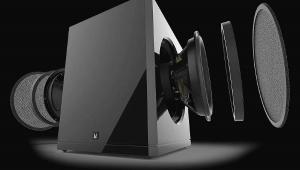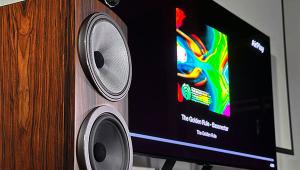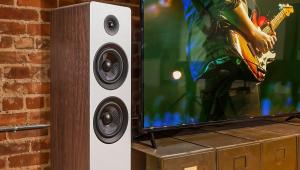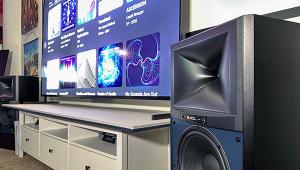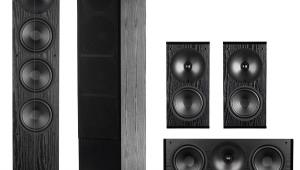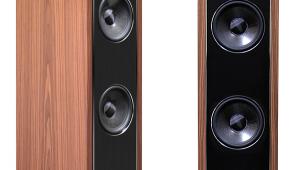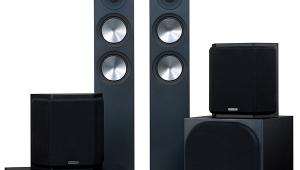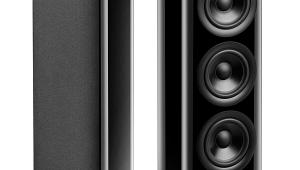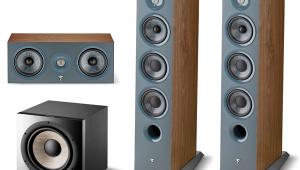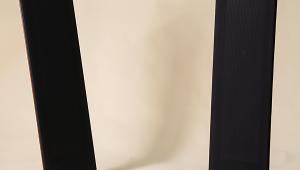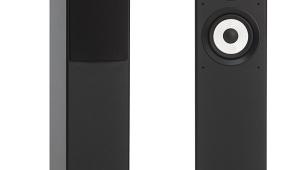It's about time we get a review of these Polks.. It seems the weakest link are the Subs, and I really think Polk should update their sub line to go beyond the DSWmicroPRO..
Good review and hope to see a review of the Bookshelf setup.
Polk LSiM707 Surround Speaker System

At A Glance: Excellent dynamic range • Solid imaging and depth • Could use more top-end air
Polk Audio has a proud history stretching back to the early 1970s. Its products have leaned more to the familiar and affordable rather than to the expensive and esoteric, but there have been exceptions. The SRT series, introduced in 1995, was a surround system with seven separate speakers encompassing 35 active drivers, including two subwoofers said to be capable of 120 decibels at 30 hertz. It corralled its fair share of buyers willing to pony up the $10,000 asking price.
That was then, of course, and 17 years later, that price seems almost quaint for a full 5.1-channel, high-end speaker system. But if the SRT was Polk’s brute-force throw down to the high end, its new LSiM range takes a very different approach. The price of the LSiM package reviewed here remains remarkably close to that of the SRT when it was introduced, but the take-no-prisoners, Terminator-like design of that earlier system has been replaced by serious, detailed refinement.
The most interesting speakers sound great, but they also have a great story to tell. Polk’s new LSiMs speak volumes.
Volume One: Tech
The LSiM Series consists of six different models: two floorstanders, a bookshelf speaker, two centers, and a dedicated surround. All of them offer design concepts found among other high-end speakers, some of them unique to Polk.
The ideal material for loudspeaker cones would be so light that the speaker can respond quickly, so stiff that it doesn’t flex while moving, and so well-damped that when the singing stops, the melody doesn’t linger. No such perfect substance exists, but for the LSiMs’ drivers (apart from the tweeters), Polk has chosen Super Cell Aerated Polypropylene, or APP, a material its engineers feel may be an ideal compromise. Aerated refers to the air injection used to make the polypropylene expand. The expansion produces voids in the center, reducing the cones’ mass. After fabrication and curing, the outsides of the cones are hard for stiffness (Polk calls this “crunchy”), and their insides soft for damping (“chewy”).
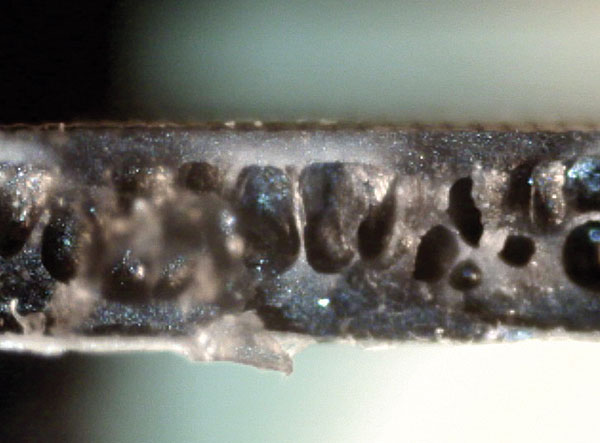
A 1-inch ring-radiator tweeter handles the highest frequencies. A similar tweeter was used in earlier Polk LSi models, but it has been further refined. The radiating surface in a ring radiator is shaped like a donut, with a small phase plug in the center. Similar ring-radiator tweeters are currently in use by other manufacturers and widely admired for their flat, on-axis response (although less so for their off-axis dispersion).
More interesting is that the tweeter and midrange in each of the LSiM models (except for the LSiM702F/X surround) are mounted in an integrated, molded structure Polk calls its Dynamic Sonic Engine. This includes a dedicated midrange subenclosure that provides both a rigid mounting platform and isolation. It also locks the two drivers into very close proximity for superior dispersion.
Both of the LSiM towers are four-way designs that employ a pair of oval bass drivers called Cassini Ovoids in Polk’s colorful nomenclature. As a Wikipedia entry puts it, “A Cassini oval is a quartic plane curve defined as the set (or locus) of points in the plane such that the product of the distances to two fixed points is constant. Cassini ovals are named after the astronomer Giovanni Domenico Cassini, who studied them in 1680.” Whatever. Polk calls these drivers subwoofers because they operate primarily below 100 Hz, but unlike most separate subs, they are passive and driven by the main amplifier channel powering the rest of the speaker, not by a dedicated amp.
The LSiM’s dividing networks are called Orth Crossovers, a designation that appears to be exclusive to Polk and named after one of the company’s engineers. (I know of Linkwitz-Riley, Butterworth, and Bessel-type crossover filters among those recognized by the scientific community, but this is the first Orth). The capacitors are polypropylene on the tweeter, with mylar and electrolytic types elsewhere. The crossover leg that drives the midrange employs a notch filter to smooth the response and a Zobel network to flatten the impedance. The stated crossover slopes are (primarily) second (12 dB/octave) or third order (18 dB/octave). (See our online version of this review for a table showing crossover points and slopes for all the LSiM speakers reviewed here.)

The LSiM706c center is a three-way design with a vertically oriented midrange and tweeter; the tweeter is on the bottom. Depending on the crossover design and the intended location of the cabinet, there is no hard and fast rule that decrees that the tweeter must be mounted at the top of the cabinet, although it often is if for no other reason than that it’s expected to be there. That’s not to say that the overall dispersion pattern isn’t affected by the tweeter’s location, just that it’s one of many design aspects that interact with one another. In any event, there’s nothing keeping you from mounting the center upside down (apart from inverted labeling on the rear connection panel) if that works better in your installation.
At first glance, the LSiM702F/X surround appears to be a dipole/bipole design, but remove the grille, and you’ll see that it isn’t. Its arc-shaped baffle locates the woofer front and center and the midrange/tweeter pair off to one side. The speakers are mirror-imaged so the mid/tweeter combo can be aimed either forward or back (if the speakers are located to the sides of the listening position) or toward the center or the outside (if used behind the listener). A front-mounted switch accommodates mounting either on or near a wall (closer than 2 feet) or farther away (as it was in my setup).
The cabinets in the LSiM models are 0.75-inch MDF, with 1.25-inch baffles. The internal bracing is extensive, largely by virtue of Polk dividing the cabinet into separate chambers for individual drivers. Even the two woofers have their own individual and separately ported enclosures. All of the LSiMs, even the surrounds, employ Polk’s traditional PowerPort technology. This woofer-loading technology positions shaped cones at the mouth of each port, which is said to reduce the port turbulence that can result in wasted power.
Finishing touches include dual, high-quality binding posts (two pairs for biwiring or biamping, if desired, on all but the LSiM702F/X surrounds); removable, so-called zero-diffraction grilles (I left them off; the drivers look too impressive to cover up, and in any case, I generally do my listening that way); and a choice of finishes. Our samples were in a gorgeous, satin, Mount Vernon Cherry, although with less visible grain than I prefer. The rubber foot or spike system (you can choose either) is slick and allows you to adjust each corner for tilt and leveling from the top of the speakers’ base using a supplied Allen wrench.
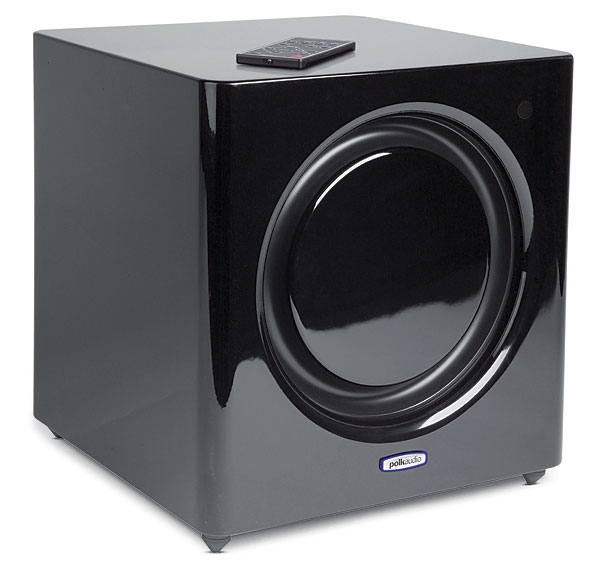
There is no separate subwoofer in the LSiM range, so to fill the gap, Polk sent along two of its tiny DSWmicroPRO3000 powered subs. The 10-inch driver is supplemented by a bottom-mounted, 10 x 10-inch square passive radiator. An amplifier rated at 1,200 watts handles the motivational chores. The connections are fairly typical, including speaker- and line-level inputs, low-level outputs for daisy chaining to a second sub, an adjustable low-pass filter on the line-level L/R inputs (40 Hz-120 Hz), and a single, LFE input that bypasses the filter. The On/Off switch offers three options for power-up: always on, triggered—using the sub’s 12-volt trigger input, or autosensing of the audio signal.
All of the DSWmicroPRO subs (there are smaller and larger models than the 3000s) include Polk’s AutoPRO room-resonance correction (discussed later). A remote control lets you adjust the volume, change the subwoofer’s phase (by 0, 90, 180, or 270 degrees), select Night (which dims the LED, power indicator and reduces the volume of the sub by 50 percent), turn the power indicator off, and choose one of four subwoofer positions (cabinet, corner, midwall, and midroom).
Volume Two: Setup
We requested two of the DSWmicroPRO3000 powered subs as part of the review package. Unfortunately, one of them was DOA. Shortly afterward, it was replaced. But both the functioning original and the replacement sample developed an odd, occasional clattering. (It sounded like wires intermittently striking the backs of the cones, but I didn’t tear them apart to investigate.) Finally, two new, cleanly functioning samples arrived. Since they came in fairly late in the process, a single Hsu Research VTF-15H filled in as needed during the interim. Except as noted, the observations here refer to the sound with the two DSWmicroPRO3000s installed.
The LSiM707 towers were positioned about 5 feet out from the short wall behind them in my home theater studio. They were about 9½ feet apart, with the left speaker about 4 feet from the left wall and the right speaker about 2 feet from the right. The LSiM706c center was located on a low stand under the projection screen. The LSiM702F/X surrounds were placed on stands near the back of the room with the midrange and tweeter on the outside where they could reflect off the side walls. The main seating position was about 11 feet from the front speakers and 7 feet from the rears. The left and right front speakers were toed in toward the center seat—the seat I take when I listen to two-channel music. For movies, I prefer to sit about 20 degrees left of center. After some experimentation, the DSWmicroPRO3000 subwoofers were located side by side near the wall several feet directly behind the center-channel speaker—the location I currently prefer for subwoofers in my room. I selected the midwall setting on the included remote.
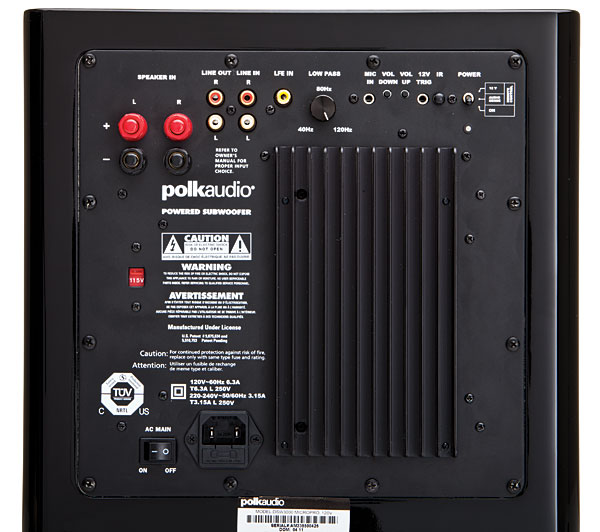
Setting up the subwoofers’ AutoPRO room-resonance correction system involved simply positioning the microphone at the main listening seat, plugging it into each sub in turn, and pressing the Room button on the remote. Because I sit at slightly different locations for music and movies (about 4 feet apart), I compromised and placed the microphone about halfway between them (there is no location for single-microphone-position equalization that will serve more than one listening seat equally well). Once engaged, the system automatically runs through a series of bass tones several times and derives compensation.
The main speakers were driven by a Parasound Halo A 51 power amp and an Integra DTC-9.8 surround preamp-processor. The primary sources were a Panasonic DMP-BDT350 Blu-ray Disc player (used with an HDMI connection to the Integra pre-pro for movie playback) and a Pioneer Elite DV-79AVI universal DVD player (used as a transport for CD playback connected via a coaxial digital link to the Integra).
Volume Three: Tweaking
My first listening impressions of the Polk speakers were definitely positive, but compared to what I had in the system immediately prior (my vintage but still reliable Energy Veritas v2.8s), the L/R LSiM707s seemed a bit dark in the extreme treble, with less air than I prefer. Since the LSiM’s tweeters were located about 6 inches above my seated ear height, I began by tilting the speakers forward by just a few degrees. The speakers’ adjustable feet made this easy (for this review, spikes were not used). This helped a little, but more was needed. I next installed a pair of QED Silver Anniversary-XT speaker cables for the front L/R channels. I have used them in the past with other speakers but found them a little bright. Not here.
- Log in or register to post comments


It appears Mr. Norton has fallen victim to a common item of confusion with recent vintage Onkyo/Integra products. The 9.8 does not allow separate low pass and high pass frequencies as stated in the review. As can be seen on numerous HT forums, Onkyo/Integra's decision to expose the "LPF of the LFE" as a user adjustable option has lead many to believe as Mr. Norton that they can select the high and low pass frequency for bass redirection separately. In reality, the "LPF of LFE" setting only limits the high frequency response of the LFE (.1) channel in a multi-channel mix. The "LPF of the LFE" has no effect on information redirected from the main channels (L/C/R/Surrounds) to the subwoofer via bass management. Mr. Norton was sending only information below 40Hz in the main channels to the subwoofers while limiting information in the LFE channel to 80Hz and below. There was no overlap between the subwoofers and mains in the 40-80Hz range. In fact, if the sound mixer included >80Hz material in the LFE channel, that information was lost.
Mr. Norton's finding that mid-bass was thin when the mains were set to 80Hz is most likely a room placement issue where the room to listener relationship created a dip relative to the same frequency range produced by the mains. I know reviewers don't generally employ room correction during reviews, but it's likely the Audyssey MultEQ XT system in the 9.8 would have corrected the dip below 80Hz if the system were used with the 80Hz crossover on the mains instead of 40Hz.
As always, I enjoy Mr. Norton's audio reviews and look forward to more in the future. Don't limit him to video products only. :-)

I know how difficult it is to make high-quality and beautiful mockups myself, and that's why I buy ready-made mockups for my 3D projects on this site - yellowimages , because this site is the best and there are many high-quality mockups that will suit any project! See for yourself the quality and reliability of this site with mockups!

